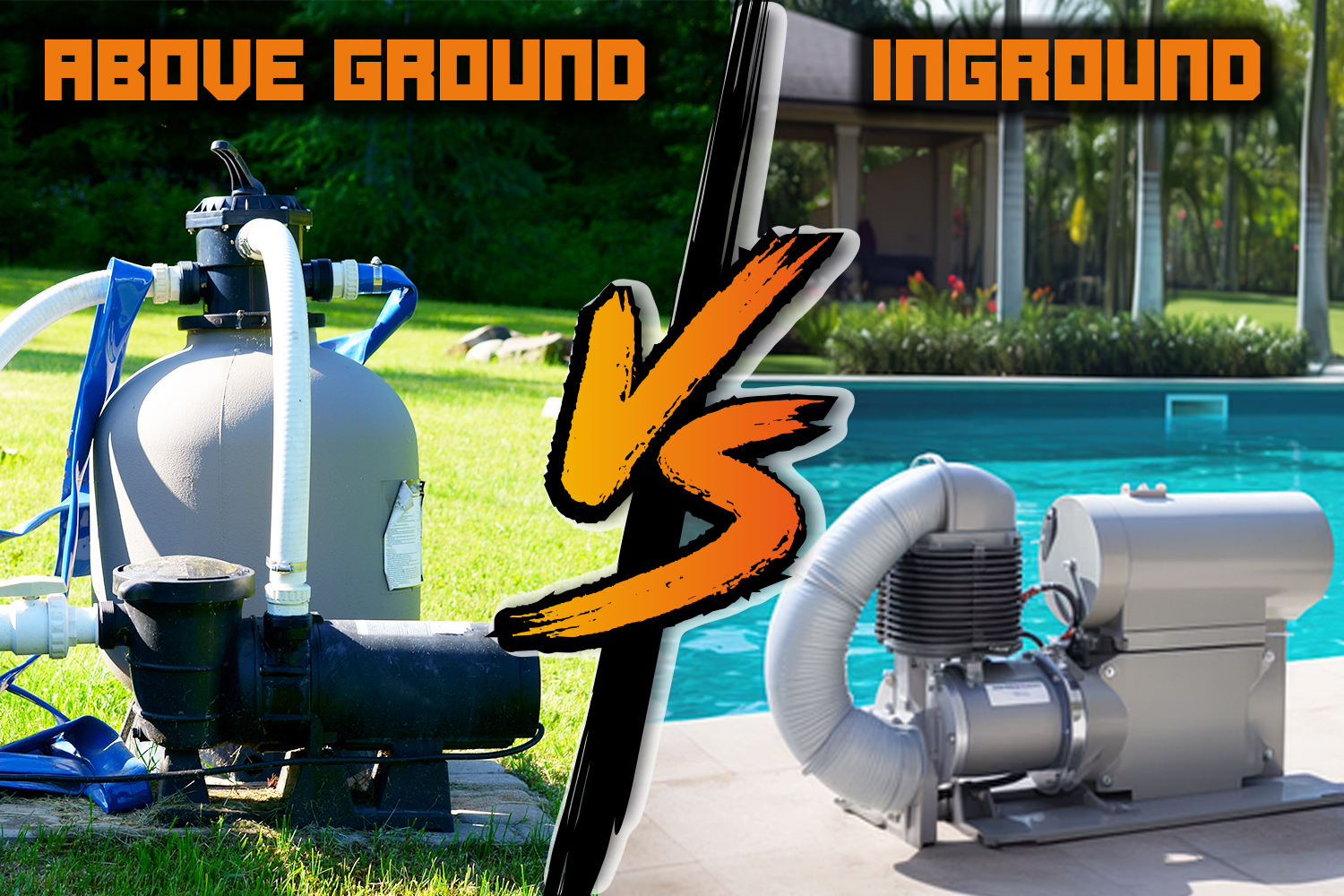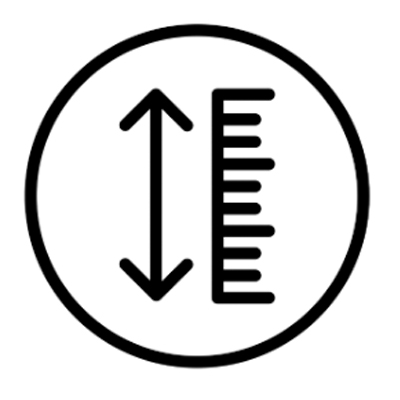
Diving into the world of pool ownership? When it comes to pool equipment, some parts and supplies work differently for inground and above-ground pools. Regarding pool pumps, there are key differences between pumps designed for each pool type. These differences are primarily related to features, size & design, installation, flow rate, cost, and maintenance. Here’s a simple breakdown of these 6 differences:
 Features
Features
Inground pool pumps are self-priming while above-ground pumps are not. Self-priming a pool pump means that the pump can work on its own without needing you to fill it with water first. It's like a self-propelling bicycle - once you push off, it keeps moving forward without needing constant pedaling to maintain momentum.
Horsepower is a measure of a pool pump's strength and water-moving efficiency. Faster water transfer is achieved with larger horsepower pumps, which is desirable for large pools or situations requiring reliable water circulation. Inground pool pumps have to circulate larger amounts of water since inground swimming pools are larger in size (gallons) than above-ground pools. However, it is important to consider how efficiently the pump operates and if it's the right size for your swimming pool regardless of type.
 Size & Design
Size & Design
Inground pools are larger (in gallons) than above-ground pools. Inground pumps have to meet the demands of circulating water in a larger pool while above-ground pool pumps hold less water, therefore the pumps can be smaller.
Since inground pools hold more water, the pumps need to be more durable to withstand the increased workload. Overall, the design differences between above-ground and inground pool pumps are primarily influenced by the size, pumping power, and installation requirements dictated by the size and type of pool they are intended for.
 Installation
Installation
There are multiple ways to install inground pool pumps such as above water level or below ground level. Putting the pump below the ground reduces strain on the pump while installing it above the ground makes it easy to reach for maintenance. Due to their size and complexity, inground pool pumps may require professional installation to ensure they are set up correctly and safely.
Above-ground pumps are installed below water level. They use "flooded suction," where gravity and air pressure help the pump without needing a strong vacuum or suction pressure. They are often designed with a plug-and-play approach, making them easier for pool owners to install and operate without professional help.
 Flow Rate
Flow Rate
Imagine you have a hose and you're filling up a bucket with water. The flow rate is how fast or slow the water is coming out of the hose. If the water comes out really fast, that's a high flow rate. If it trickles out slowly, that's a low flow rate. Flow rate overall informs you how quickly something, like water, is moving through a certain space, like a pool pump.
Above-ground pool pumps can push 30 to 60 gallons of water every minute, while inground swimming pool pumps can handle 75 to 150 gallons per minute. It's important to match the pump's flow rate with the filter's flow rate. If the water moves too quickly, the filter won't clean the water effectively.
Maintenance
Maintaining above-ground pool pumps is easier because they're near the pool and simpler to access. You just need to clean the pump basket and check for debris, which is pretty straightforward.
Maintaining inground pool pumps can be a bit harder because they're usually underground or in a pump room. This makes them more challenging to reach for cleaning and checking for debris.
 Cost
Cost
The cost difference between above-ground and inground pool pumps can vary based on factors like brand, size, and features. However, generally speaking, inground pool pumps tend to be more expensive than above-ground pool pumps.
Inground pool pumps are usually larger and more powerful, which can contribute to their higher cost. Additionally, inground pool systems often require complex plumbing and filtration setups, which can increase the overall cost of the pump and its installation.
On the other hand, above-ground pool pumps are typically smaller and less powerful, which can make them more affordable. Since above-ground pools are generally simpler in design and construction, the pumps for these pools are often less expensive.
It's important to consider not just the upfront cost of the pump, but also factors including horsepower, voltage, and speed, which can impact long-term costs.
Want to learn more about pool pumps? Check out more of our Pool Supplies Blog and list of frequently asked questions for simple explanations and tips about pumps, filters, and more pool equipment.






 Pools
Pools Spas
Spas Liners
Liners Equipment
Equipment Covers
Covers Accessories
Accessories Cleaning
Cleaning  Pool Fun
Pool Fun  Clearance
Clearance
